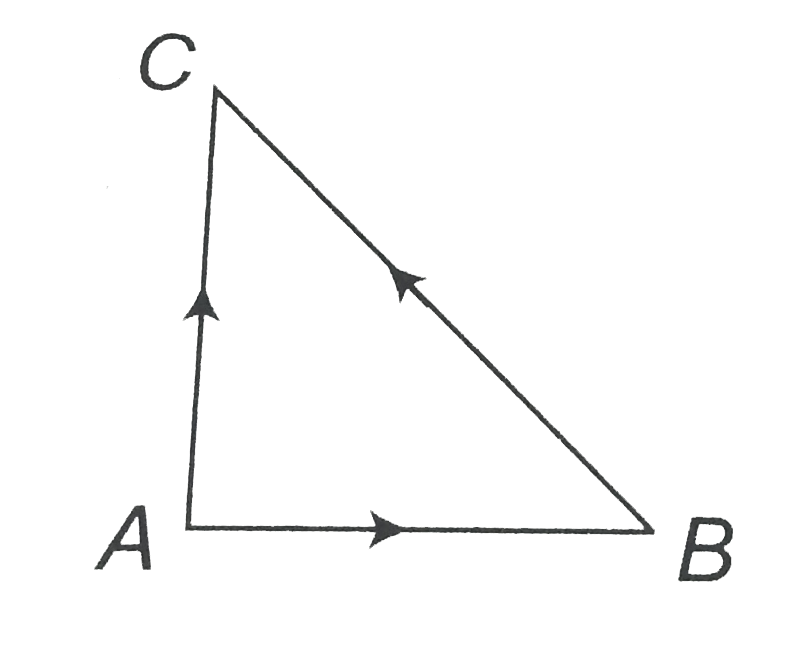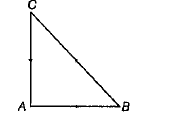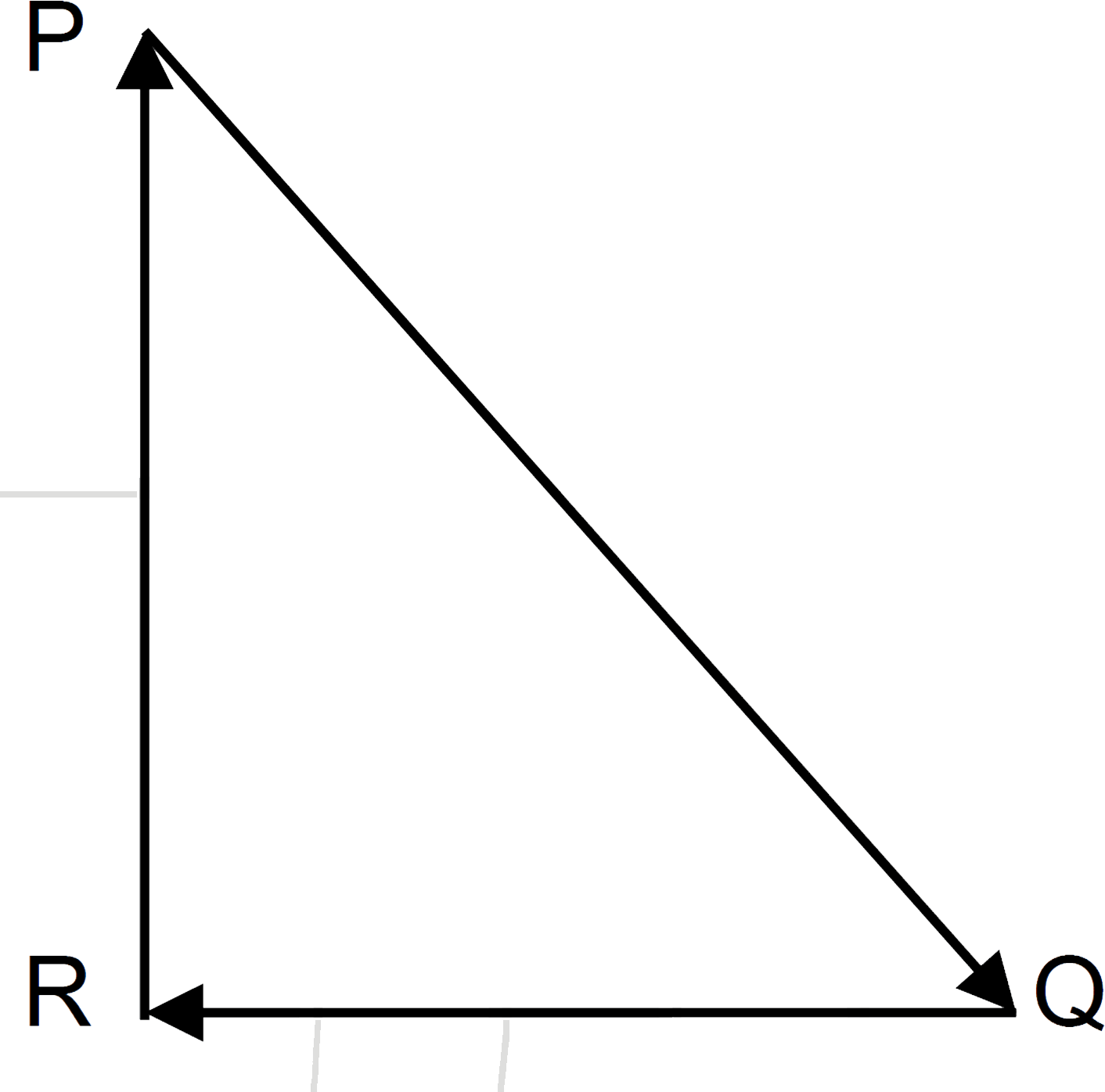Three forces start acting simultaneously on a particle moving with velocity →v. These forces are reprsented in magnitude and direction by the three sides of a triangle ABC as shown in the figure. The particle will now move with velocity :

|→v| in the direction of the largest force along →v
→v, remaining unchanged
greater than →v
less than →v
The correct Answer is:B
In this case, the three sides of the triangle taken in the same order represent the three forces. Hence their resultant is zero. Generally −−→CA+−−→AB=−−→CB but in this case the third force is along −−→BC∴−−→CB+−−→BC=0
But F=m(dvdt) as F=0,dvdt=0 or v = constant.
Topper's Solved these Questions
- BOOK - MARVEL PUBLICATIONCHAPTER - VECTORSEXERCISE - MULTIPLE CHOICE QUESTIONS (STANDARD LEVEL)84videos
VECTORS
- BOOK - MARVEL PUBLICATIONCHAPTER - VECTORSEXERCISE - TEST YOUR GRASP10videos
VECTORS
- BOOK - MARVEL PUBLICATIONCHAPTER - REFRACTION OF LIGHT EXERCISE - Test Your Grasp10videos
REFRACTION OF LIGHT
Similar Questions
Three forces start acting simultaneously on a particle moving with velocity →v. These forces are represented in magnitude and direction by the three sides os a triangle ABC (as shown). The particle will now move with velocity.
 View Solution
View SolutionThree forces start acting simultaneously on a particle moving with velocity, →v. These forces are respresented in magnitude and direction by the three sides of a triangle ABC. The particle will now move with velocity
 View Solution
View Solution
Knowledge Check
- Question 1 - Select One
Three forces start acting simultaneously on a particle moving with velocity, ¯v. These forces are respresented in magnitude and direction by the three sides of a triangle ABC. The particle will now move with velocity
 A→v remaining unchangedBless than →vCgreater than →vD→v in the direction of the largest force BC
A→v remaining unchangedBless than →vCgreater than →vD→v in the direction of the largest force BC - Question 2 - Select One
Three forces start acting simultaneously on a particle moving with velocity v. These forces are represented in magnitude and direction by the three sides of a triangle ABC (as shown). The particle will now move with velocity.
 Aless thanBgreater than vCv In the direction of largest force SCDv remaining unchanged
Aless thanBgreater than vCv In the direction of largest force SCDv remaining unchanged - Question 3 - Select One
Three forces start acting simultaneously on a particle moving the velocity →V. The forces are represented in magnitude and direction by the three sides of a triangle ABC (as shown). The particle will now move with velocity
 Aless than →VBgreater than →VC∣∣→V∣∣ in the direction of largest forceD→V remaining unchanged
Aless than →VBgreater than →VC∣∣→V∣∣ in the direction of largest forceD→V remaining unchanged
Three forcesstart acting simultaneously on a particle moving with a velocity →v . These forces are represented in magnitude and direction by three sides of a triangle taken in the same order. What now will be the velocity of the particle ?
View SolutionIf an α− particle moving with velocity 'v' enters perpendicular to a magnetic field then the magnetic force acting on it will be-
View SolutionThree forces start acting simultaneously on a particle moving with velocity, ¯v. These forces are respresented in magnitude and direction by the three sides of a triangle ABC. The particle will now move with velocity
 View Solution
View SolutionA particle moving with velocity →V is acted by the three forces shown by the vector triangle PQR. The velocity of the particle will :
 View Solution
View SolutionThe force acting on a particle of charge q moving in a uniform magnets field with velocity v is
View Solution

